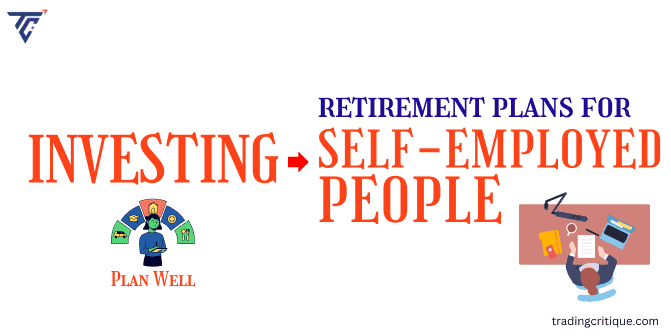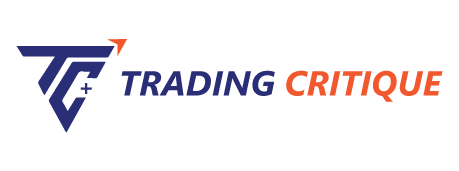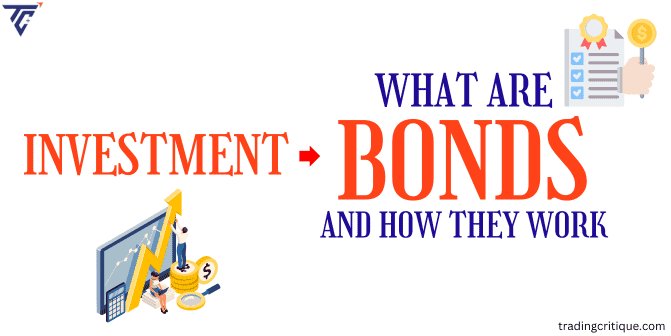Investment Tips: 4 Best Retirement Plan Options for Self Employed People
The US Bureau of Labor Statistics reported a total of 10.01 million self-employed individuals in the past year. This article covers how self-employed people can plan for retirement.
Quick Insights
Self-employed retirement plan are not funded by the government but are instead managed by private entities, such as financial institutions or employers.
Its aim to provide additional choices for all working individuals, whether employed or self-employed, to complement their retirement savings under a properly organized and controlled system.
In the United States, self-employed individuals have several retirement plan options that can help them save for their future.
The self-employed can choose from four specific plans: solo 401(k), SEP IRA, SIMPLE IRA, and IRA (Traditional and Roth).

What are the 4 best retirements planning for the self-employed?
Whether you’re a small business owner or self-employed, you have many options for saving for retirement. Here some common types of retirement plans are available. Let’s see the best retirement plans in the USA.
Solo 401(k)
A solo 401(k) plan is an efficient retirement savings strategy for self-employed individuals, requiring business owners with no employees except spouses, without age or income restrictions.
Contribution limits: In 2024, an employee contribution of $23,000 and an employer contribution of 25 percent of company profits can be made, for a total contribution of $69,000. A $7,500 catch-up contribution for those above 50 will increase to $76,500.
Tax benefits: Contributions are tax-deferred, meaning taxes on contributions and investment gains are not paid until the money is withdrawn.
Eligibility: Available to business owners with no employees, except for a spouse.
Advantages: Employers and employees can contribute up to 100% of earned income and 20% of non-elective contributions, as defined by the sole proprietor or Schedule C taxpayer plan.
IRAs (Individual retirement accounts)
You may open an IRA whether or not you are self-employed as long as you have income. There are two types of individual retirement accounts: the traditional IRA, and the Roth IRA. Contributions to an IRA may lower your tax obligation, but they are not regarded as a business cost.
Contribution limits: For 2024, the contribution limit is $6,500, with an additional $1,000 catch-up contribution if you’re 50 or older.
Traditional IRA: It may be tax-deduction contributions, and earnings are tax-deferred. Tax is paid on withdrawal.
Roth IRA: Contributions are made with after-tax dollars, but qualified withdrawals are tax-free.
Eligibility: Available to anyone with earned income.
Advantages: Flexibility in investment choices, tax-deferred growth for traditional IRAs, tax-free withdrawals for Roth IRAs under qualifying conditions.
SIMPLE IRAs (Savings incentive match plan for employees)
Small employers including self-employed people can easily provide their staff with a retirement plan through the SIMPLE IRA. Employers may find it simpler to set up a SIMPLE IRA than many 401(k) programs, which have intricate regulations.
One can be established by companies with 100 workers or less who make more than $5,000 annually.
Contribution Limits: In 2024, if you’re 50 or older, you can contribute up to $15,500 with an additional $3,500 catch-up contribution. Eligible employers must match up to 3% of compensation with employee contributions or make a non-elective contribution of 2% for each employee.
Tax Benefits: Contributions are tax-deductible for employers, and employees’ contributions are made pre-tax.
Eligibility: Designed for small businesses with 100 or fewer employees.
Advantages: Lower administrative costs and simpler requirements compared to other plans, employer contributions are mandatory.
SEP IRAs (Simplified employee pension)
Employers and independent contractors can establish a tax-deferred or tax-free retirement plan by supercharging contributions into a SEP IRA. The same regulations governing accruals, withdrawals, and contributions apply to employees of self-employed and small enterprises as they do to traditional IRA plans.
Contribution Limits: You can contribute up to 25% of your net earnings from self-employment, with a cap of $66,000 for 2024.
Tax Benefits: Contributions are tax-deductible, and investments grow tax-deferred.
Eligibility: Available to any self-employed person or small business owner.
Advantages: This retirement plan provides the benefits of setting up and operating a business, including low administrative costs, flexible annual contributions, and generally no filing requirements.
6 top investment options for self-employed people
Following these given steps, self-employed individuals can effectively invest in a retirement plan and work towards a financially secure retirement.
- Choose the best retirement plan, such as a Traditional IRA, Roth IRA, SEP IRA, SIMPLE IRA, or Solo 401(k), based on your requirements.
- To set up a retirement plan, contact a financial institution (bank, brokerage firm, or mutual fund company) and complete the necessary paperwork, including a written plan agreement for Solo 401(k) and SEP IRAs.
- Decide how much to contribute based on the plan's contribution limits and your financial situation and make contributions directly to the account.
- Choose a mix of investments (stocks, bonds, mutual funds, ETFs) based on your risk tolerance, investment goals, and time horizon.
- Regularly review investment performance, monitor and adjust contributions and choices to align with retirement goals, and periodically rebalance your portfolio to maintain desired asset allocation.
- Understand and follow the tax rules and contribution limits for your chosen plan, and maintain records of contributions and earnings for tax reporting purposes.
Learn more: 7 retirement planning tips
Conclusion
Self-employed individuals should choose the right retirement plan to maximize tax benefits and ensure financial security. Plans like Solo 401(k)s and SEP IRAs offer high contribution limits, tax-deferred growth, and flexibility, with Roth options for tax-free withdrawals, making them attractive options for retirement savings.
Early retirement planning is essential for all incomes, understanding opportunities and risks, and collaborating with financial and tax advisors. The retirement plan you choose depends on your work environment, current income, and how much you want to spend. So choose the right plan and live a perfect life.
Pro Tip
You can build your retirement with great security with our trusted forex broker. We provide you with learning opportunities to invest your economy in many investment vehicles like stocks, bonds, mutual funds, forex, and cryptocurrencies.
FAQs – Frequently Asked Questions
1. What retirement plans are available for self employed?
Self-employed individuals have several retirement plan options to choose from, each with its own benefits and contribution limits. The main retirement plans available for self-employed people include:
Solo 401(k) plans, IRAs (Traditional and Roth), SIMPLE IRA, and SEP IRA. Self-employed individuals can choose the retirement plan that best meets their financial goals and business structure.
2. At what age should you start thinking about retirement?
Start retirement planning early, especially in your 20s, as it allows for compounding interest and increased money growth in retirement years, as many people start working full-time after graduation.
3. Are self-employed people able to contribute to a 401(k) and IRA?
Self-employed people can contribute to both a 401(k) and a traditional IRA or a Roth IRA, which are separate retirement accounts offered by employers and managed by individuals.
4. Where to open a retirement plan if you’re self-employed?
To open an IRA, solo 401(k), SEP IRA, or SIMPLE IRA, choose an online broker. They will guide you through the process and provide the necessary IRS paperwork. If you prefer, consult an accountant and consider working with a financial advisor to set up retirement plans.
5. Which self-employed retirement plan is best?
The solo 401(k) is an excellent choice for sole employees of a company, including spouses, as it offers the benefits of a standard company-sponsored plan.

Subscribe to
Our Newsletter
Latest Posts
How to Trade Forex | Learn 6 Strategies and Tips
Discover the world of forex trading with our comprehensive guide. Learn essential...
Read MoreFP Markets Review 2024: Everything You Need To Know
Founded in 2005, FP Markets is a leading online broker renowned for...
Read MoreHow to Invest in Ethereum in 2024 – Simple Guide for Beginners
Ethereum is a decentralized blockchain platform that enables smart contracts, enabling secure,...
Read MoreIs Cryptocurrency a Safe Investment? What You Need To Know
Investing in cryptocurrency involves selecting the right cryptocurrency and securely storing your...
Read MoreHow to Read Forex Charts for Beginners • Simple Methods
Traders look for the currency pair price movements, their patterns, and their...
Read MoreBonds: What it is, Types of Bonds & How they Work (2024 guide)
Are you seeking for safe investment with predictable returns? Our 2024 guide...
Read MoreWhat are The Best Crypto Trading Strategies for Beginners in 2024?
Unsure about choosing the best trading strategies for beginners in 2024? This...
Read MoreForex Pairs: How They Work, How To Read, Examples
Forex pairs are combinations of two different currencies that are traded in...
Read MoreBest Ways to Avoid Losses in Forex Trading
Foreign Exchange – Forex market is the world’s largest financial market in...
Read More









